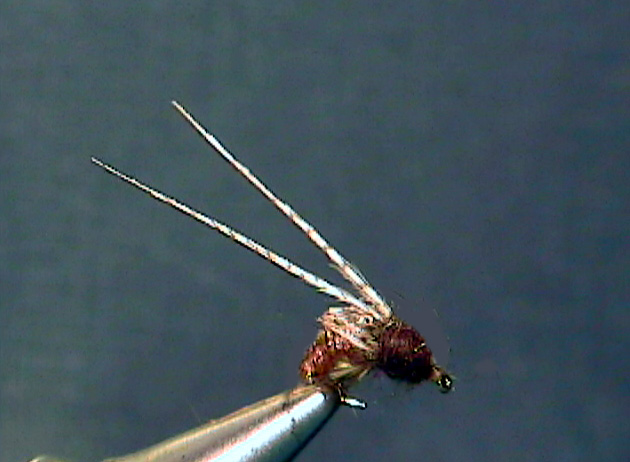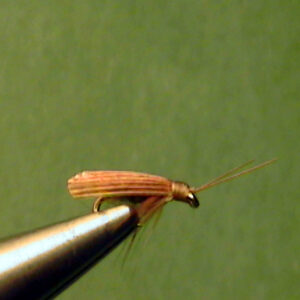Hook Size: 18
Lepidostoma species of which there are many. They exist in the East, Mid-west
and West. These are cased caddis. They are very frequent in streams with a lot
of timber or streams or rivers that flow through the forest. They hatch from June
to September depending on the location and the particular species.They fasten their cases to logs and rocks near the edges of the stream or river
when they begin pupation. The pupae come to the surface and generally have a
difficult time escaping from the water. Most of the species shed their pupal skin
on the surface of the water.
Pupa Presentation:
The “Perfect Fly” Little Brown Caddis Pupa should be presented using the up
and across presentation in the feeding zones of the stream. Add a tiny bit of
weight to above the fly about eight inches. These are not a fast water caddisfly.
Most species hatch in moderate to slow moving water.
When the fly hits the water mend the line to get it down to the bottom as quickly
as possible. It should bounce along the bottom until it reaches the down and
across position. When it does allow the fly to swing all the way directly
downstream from your position and stop the tip of the rod to allow the fly to rise
back up to the surface. Let it come to the surface and stay there for a few
seconds before making another cast. The trout usually take the fly on the rise.
If you don’t get any action in a few cast, move downstream a few feet and repeat
the process.

